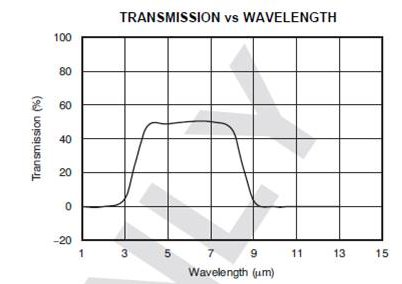Is is possible to use the TMP006 with larger PIR input ranges by using external materials/techniques to condition the input?
In particular, I'm looking for something that can get up closer to the 1000C range-- would an external IR filter be suitable for blocking some of the energy hitting the thermopile and thus 'scale down' the sensing range of the part? (For example if some material was found to result in only passing 10% of the IR spectrum would that result in 10x the input range?)


